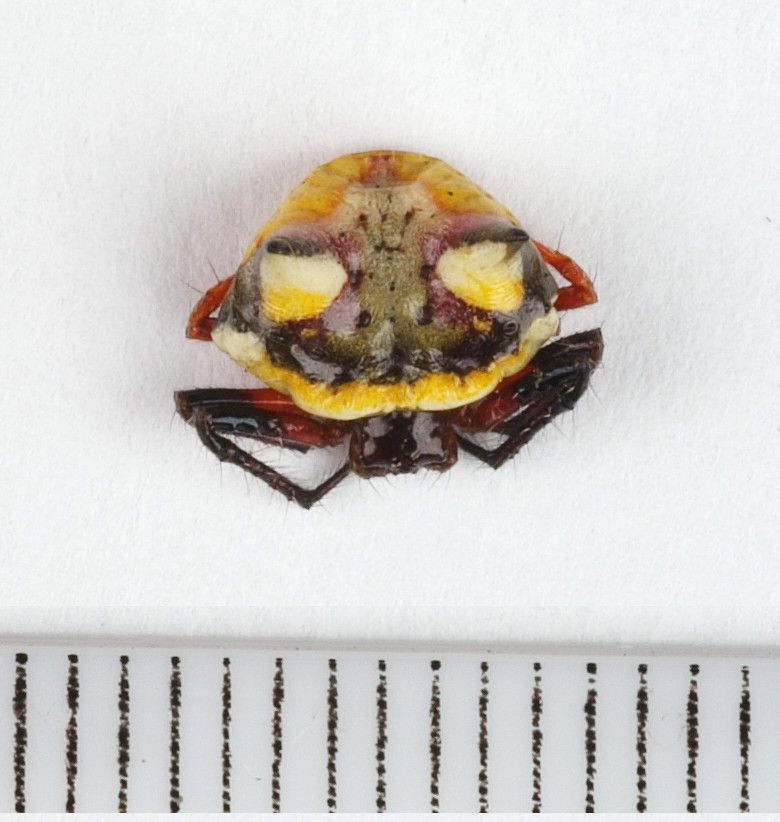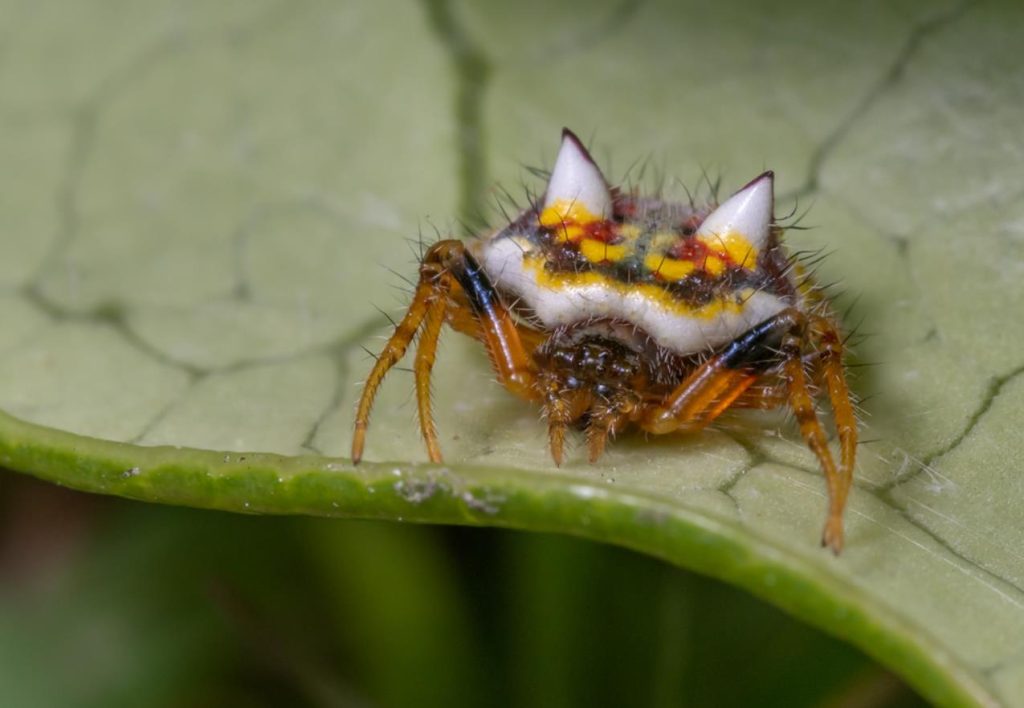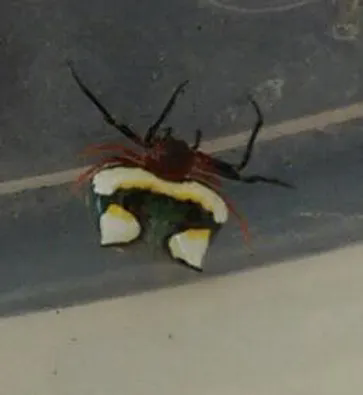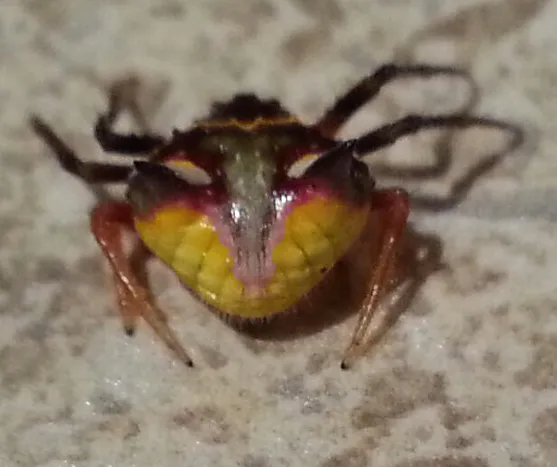
Introduction:The Two Spined spider (Poecilopachys Australasia) is a nocturnal spider. It is an immigrant to Australia and has been recorded in New Zealand since the early 1970s.
Description:The female, Poecilopachys Australasia is about 8 mm in length and when mature has two white horn-like spines. Yellow and white bands and some red-brown markings are visible. Large body hairs on an adult female gradually disappear as she approaches maturity.
The male is much smaller (2.5 mm – 3 mm in length) and looks very different. . Adult males lack the pair of large abdominal spurs and the bright colours that characterize the adult females. They look so different that they were first thought to be a different species.
Despite their conspicuous colours, they are seldom seen as they usually hide under leaves during the day. At night they emerge and spin a horizontal orb web to catch night-flying insects such as moths. In the morning they eat their web completely and settle down to hide for the day. The Two Spined Spider is one of the few spiders that can change colour quickly, perhaps to confuse potential predators.
Habitat:The Two Spined spider is found in gardens on shrubs, often on citrus trees. By day, the spider will hide under leaves, emerging at night to construct a cart wheel-shaped web.
Prey:Despite the small size of the Two Spined spider, it is capable of capturing moths and other insects several times its own size.Web:
This species only forms a small orb web at night and is not often noticed during the daylight hours as it rests underneath green leaves. It makes a small orb web during the night and may also be found guarding a small brown spindle-shaped, papery egg sac.
Breeding: The egg sac of the two spined spider is spindle shaped.
Venom:Two Spined spiders are regarded as harmless to humans. The toxicity of the venom of this spider towards humans is unknown but it is a small, non-aggressive spider and thus is most unlikely to cause significant harm.

Poecilopachys australasia, commonly known as the two-spined spider, is an Australian orb-weaving spider which has also been recorded in New Zealand since the early 1970s. The spider is nocturnal, spinning a cart-wheel-shaped web at night which it consumes in the morning. Females can be commonly found on the undersides of citrus tree leaves during the day.

Distribution:Two-spined spiders are native to Australia, and were first noted in Auckland, New Zealand, in 1971.[2] Since their introduction to New Zealand, the spiders have spread south; they are now common in the northern half of the South Island, and have been found as far south as Christchurch.
Other behaviours and adaptations
Despite their conspicuous colours, they are seldom seen as they usually hide under leaves during the day. At night they emerge and spin a horizontal orb web to catch night-flying insects such as moths. In the morning they eat their web completely and settle down to hide for the day. The Two-spined Spider is one of the few spiders that can change colour quickly, perhaps to confuse potential predators.

What do they look like?
Small spiders, less than one centimetre across. The upper surface of the female’s abdomen is yellow and olive with two white horn-like ‘spines’ that give this spider its common name. Yellow and white bands and some red-brown markings are also visible. Males are much smaller and lack the distinctive ‘spines’ of the female.
Where are they found?
Another immigrant from Australia, these spiders have been recorded in New Zealand since the early 1970s. They have become quite common in the upper North Island. Since their arrival, they have slowly spread south and can now be found throughout most of the North Island and the Nelson region in the South Island.
What are their habits?
The two-spined spider is often found in citrus trees. By day, the spider will hide under leaves, emerging at night to construct a cart wheel-shaped web. Despite its small size, the spider is capable of capturing moths and other insects several times its own size. As night draws to a close, the spider will recycle its web by eating it. The egg sacs are a distinctive spindle shape.
What is their bite like?
These spiders are regarded as harmless to humans.
